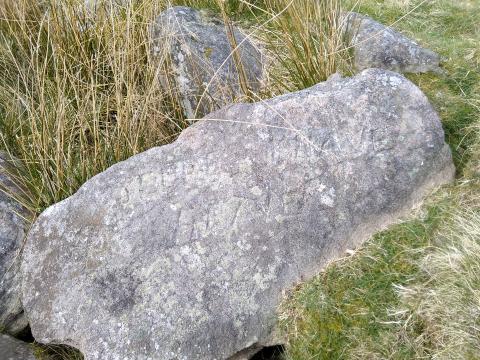Jeppe Knave Grave

I finally found it- ‘Jeppe Knave Grave’. It had twice alluded me when I lived at nearby Padiham, but this month, I was resolved to pay court. Just off the trig point of Wiswell Moor, to the west of Pendle’s nick, is the large, round tumulus. Its diameter is about 52 feet, and a few old stones lay scattered about, leading some, such as the Northern Antiquarian, to consider it the remains of ancient chambered tomb. Yet a slightly more recent legend is attached to the mysterious circle, that it is the burial of Jeppe Knave from 1327. Jeppe Knave, possibly Jeffrey Curtis, was considered to be an outlawed robber and is said to have been beheaded and his cadaver dragged to this spot. Some suggest it was because it borders three parishes, where each one might have borne a share of the expense; others that he as buried in the old, pagan tomb as a way of symbolising his soul’s return to the devil whose will he had sought to obey. The latter days of Edward II’s reign (died 1327) were certainly characterised by lawlessness, and brigands and thugs like Curtis may well have enjoyed a roaring trade. Yet justice caught up with him in the end. His alleged tomb, though considered unconsecrated and undesirable in his day, is now rather pretty and has afforded him a degree of fame (or infamy) he would otherwise have been denied. In his day, he would have been a feared local character, a man not easily refused. Yet justice caught up with him, and his remains have lain long decayed these past seven centuries.
Justice is sometimes denied, often flouted, usually delayed. But she gets her man in the end. Every man, that is. And every woman. Our crimes may not be as heinous as the medieval robber’s, but they’re offensive enough to a holy God. Numbers 32:23 says, “Be sure your sin will find you out”. Those who trust in Christ have had the penalty of their sins paid by Him. Those who reject Him, will pay for their own. Either way, they will be paid for. In full.



- Log in to post comments


 Sunday Worship 10.45am & 6.00pm
Sunday Worship 10.45am & 6.00pm